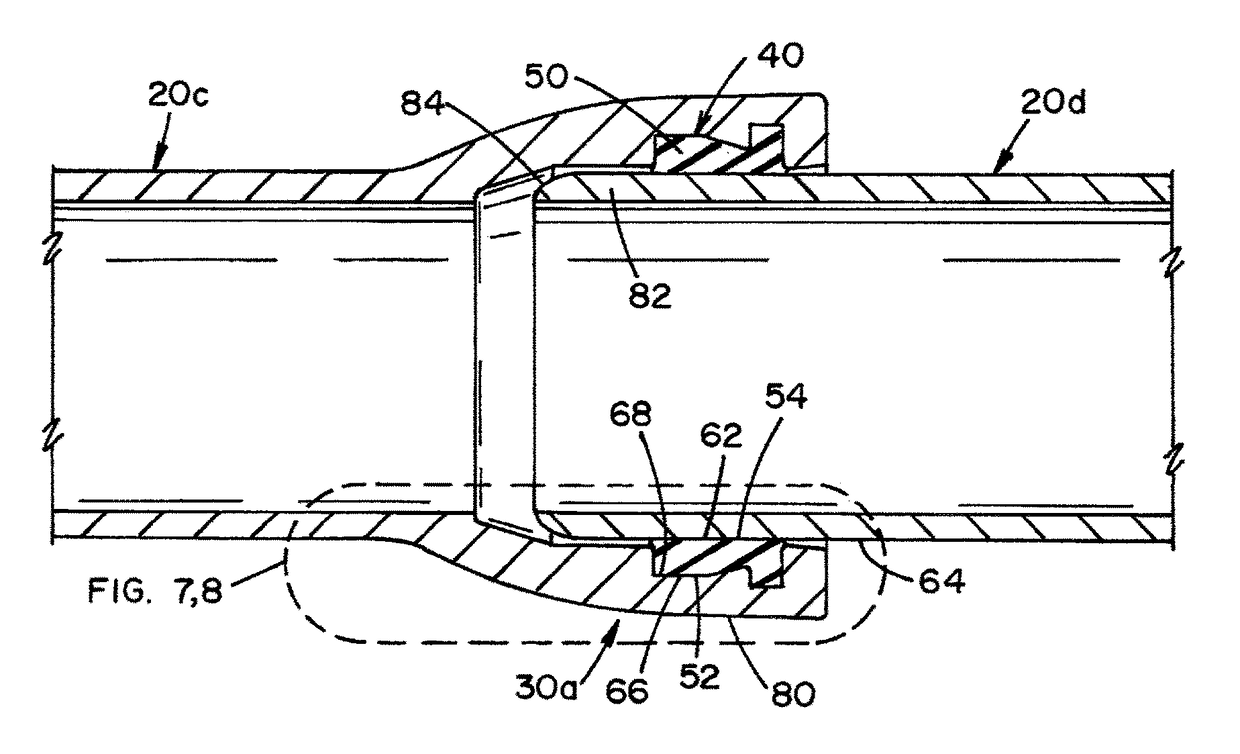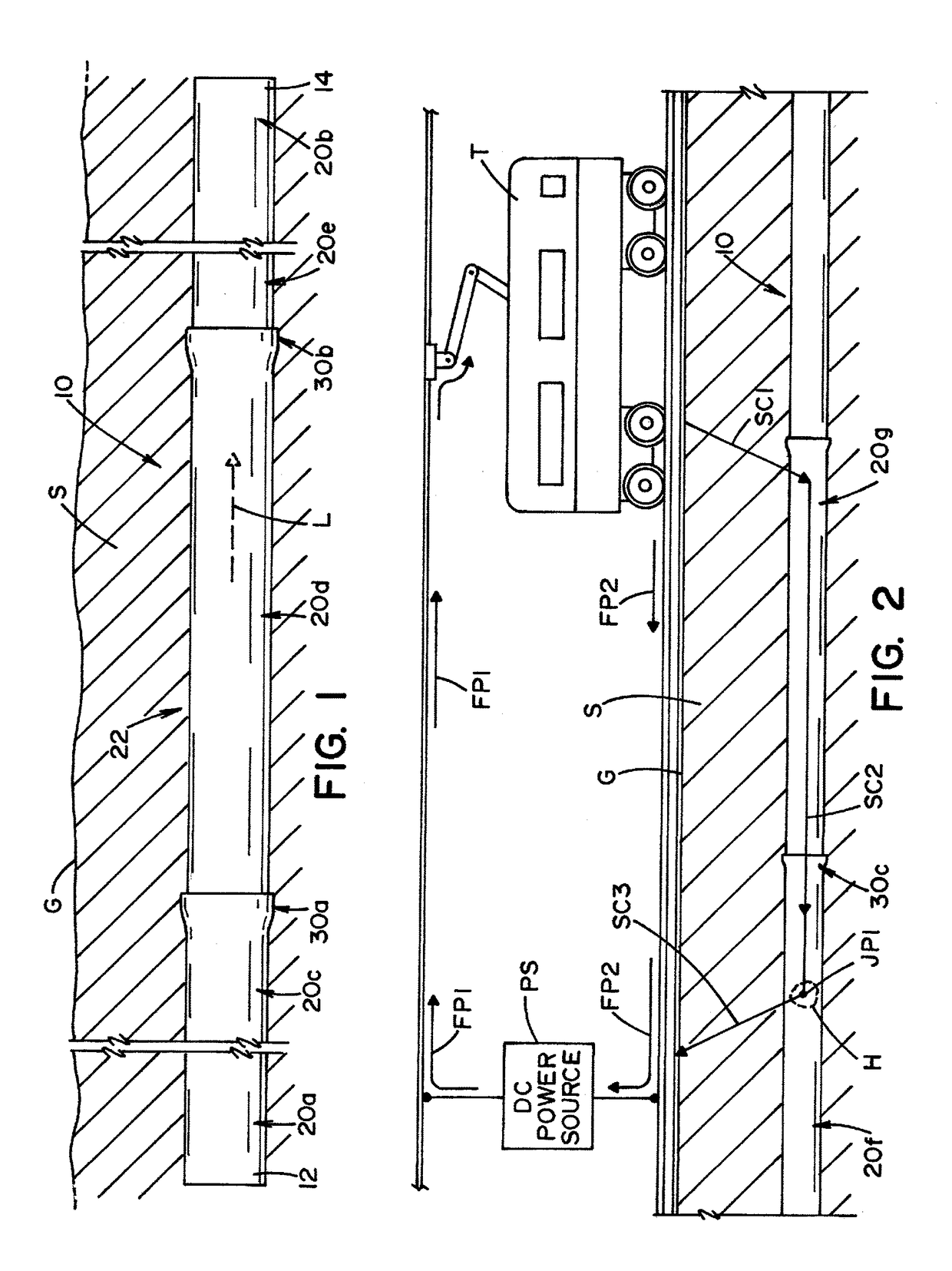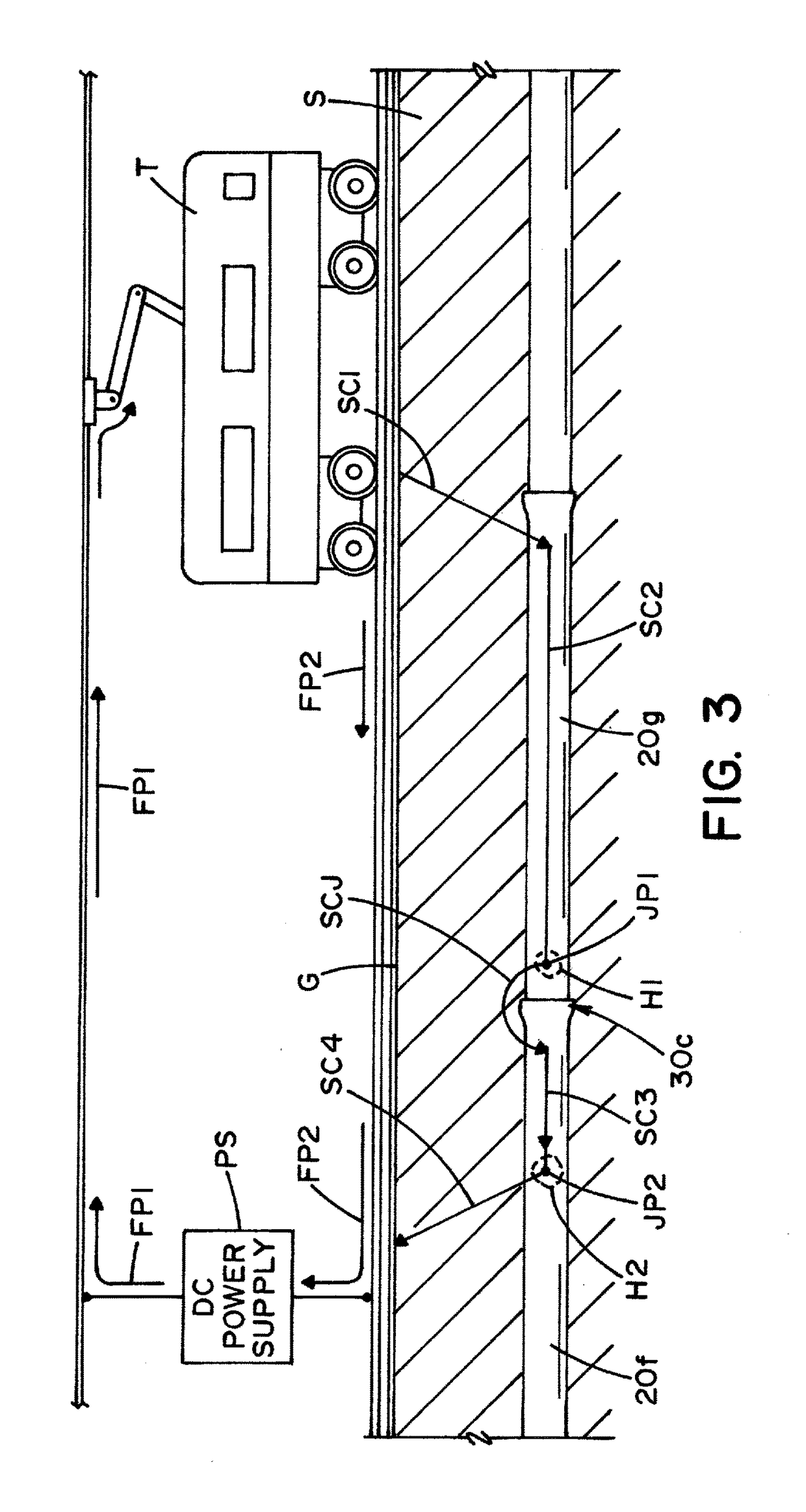Intrinsically conduct joint for metallic pipe and method of using the same
a technology of metallic pipes and conductors, which is applied in the direction of sleeve/socket joints, pipeline systems, mechanical equipment, etc., can solve the problems of reducing ineffective conductivity and electrical arc points, and achieve the effect of effective sealing
- Summary
- Abstract
- Description
- Claims
- Application Information
AI Technical Summary
Benefits of technology
Problems solved by technology
Method used
Image
Examples
Embodiment Construction
[0037]Referring now to the drawings wherein the showings are for the purpose of illustrating preferred and alternative embodiments of the invention only and not for the purpose of limiting the same, FIGS. 1-12 show a pipeline 10 that extends between a first extent 12 and a second extent 14. The pipeline is formed by a plurality of pipes 20 that are joined together at mechanical joints 30. As is shown in FIG. 1, pipeline 10 includes a pipe 20a at or near first extent 12, pipe 20b at or near second extent 14 and with pipes 20c-20e in a pipe section 22. Pipe section 22 also includes mechanical joints 30a and 30b.
[0038]Pipeline 10 is a buried pipeline that can be made of ductile iron, cast iron and / or steel. These metallic pipes 20 are coupled together by mechanical joints 30 to create pipeline 10 and to allow a flow of liquid L, typically potable water, from first extent 12 to second extent 14. As can be appreciated, any pipeline configuration could be a part of the invention of this ...
PUM
 Login to View More
Login to View More Abstract
Description
Claims
Application Information
 Login to View More
Login to View More - R&D
- Intellectual Property
- Life Sciences
- Materials
- Tech Scout
- Unparalleled Data Quality
- Higher Quality Content
- 60% Fewer Hallucinations
Browse by: Latest US Patents, China's latest patents, Technical Efficacy Thesaurus, Application Domain, Technology Topic, Popular Technical Reports.
© 2025 PatSnap. All rights reserved.Legal|Privacy policy|Modern Slavery Act Transparency Statement|Sitemap|About US| Contact US: help@patsnap.com



